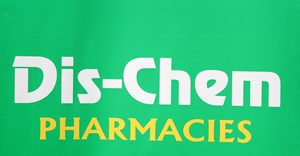
Subscribe & Follow
6 pharmacy retail trends to watch in 2020

In addition, China’s biopharmaceutical sales grew almost 25% annually from $9.4 billion from 2012 to 2016 and if it continues to grow at the expected rate, the sales volume will be $48.8 billion by 2021.
Despite these burgeoning figures, the evolution of the pharmaceutical industry is also contradictory, as healthcare tries to address new illnesses as well as incorporate different ways of thinking about wellness. PWC’s Pharma 2020 states emerging economies need more medicines while other countries look to prevention rather than treatment.
Some parts of the world are wary of wellness innovation, while in others there’s an increase in manufacturing and labelling for cannabis and alternative non-prescription formulas. These contradictions are not only on the manufacturing side of the pharma industry, there’s also work to be done in retail.
Here are six pharmacy and retail trends to expect in 2020.
1. 360 degree supply chain
“Today, the supply chain has evolved into a critical component of a company’s ability to satisfy customers, drive profitable growth and deliver new innovations to the market.” Allan Dow, president of Logility.
Having a 360 degree supply chain will be the way forward for retailers to lower prices and open up a channel of dialogue with suppliers - showing the process from initial materials used to the end product delivery.
German pharmaceuticals firm Merck KGaA’s is leading the way by using AI and predictive analytics throughout its entire supply chain. They’re also doing research on analytics software from Aera Technology Inc. to “predict demand spikes, identify bottlenecks and alleviate supply shortages for 100 products”.
According to the Retail TrendsPlaybook2020, “the software collects supply chain data from Merck KGaA’s different planning systems and, after the data is uploaded to Aera’s cloud infrastructure is analyzed by machine learning algorithms.” The algorithms then give suggestions such as supply adjustments or ask for forecasts.
2. A world without walls
“The concept of a wall-less, omnichannel retail world underpins many of the drivers, trends, and strategies that will evolve by 2020.” Kantar.com
In Retailing 2020: Winning in a Polarized World, Kantar Retail and PWC outline how successful retailers of the future will focus on three things:
1. Transparency
2. Preservation and;
3. Purpose.
Creating a retail environment “without walls” speaks to the point of transparency with the consumer. Where this is relevant to pharmacy is in having the customer able to see into all aspects of the 360 degree retail supply chain and be reassured by the product’s availability and authenticity.
Using tracking technologies like Radio Frequency Identification (RFID) can help with seamless checkout and lets customers “see everything from product origin to brand legitimacy at the touch of an icon on a handheld device.”
3. Employee technology and training
“83% of the retail decision-makers and 74% of the store associates surveyed agreed that shoppers will have better experiences when associates are equipped with technology.” Global Shopper Study, Zebra Technologies
A fine example of a business integrating employee technology and training to great benefit is Walmart and with $514 billion in annual revenues they’re doing okay. In many stores, their staff have mobile technology with a specifically designed suite of apps (like Downstock) keeping them updated with real-time information, like shipments, out-of-stocks and product locations.
Walmart is also committed to training its employees. One of its well-known programmes being Pathways, which instills “long-term, transferable skills”. They’ve reported a 10% improvement in retention among the more than 400,000 workers who have graduated from the programme.
With pharmacies and prescriptions available at US Walmart stores one wonders how long it will be before Massmart Holdings in South Africa (owned by Walmart) will be doing the same?
4. Free shipping and service
"Amazon bought the one company in the space that all the PBMs and other pharmacy businesses were threatened by." Yumin Choi, health-tech investor at Bain Capital Ventures.
Yes, Amazon is officially in the pharmacy game with its purchase of PillPack in June 2019 for $753million. This move has changed the pharmacy retail landscape forever and the immediate response sent the share prices of US retail pharmacy companies like Rite Aid and Walgreens down.
According to Healthdive, Amazon is in talks with JPMorgan and Berkshire Hathaway about plans to lower employer healthcare costs. This is another game-changer with the retailer pivoting to support and improve employee healthcare. As Amazon’s private label healthcare offerings grow, so will the global trend to try to match and improve their innovation.
5. Pharmacy and masstige retail
“Masstige is a class of products that are affordable for the general consumer but positioned as luxury goods.” Definitions.net
Masstige retail is a combination of mass and prestige with a mid-market positioning, but aimed at the higher end of the mid-market, or as Wikipedia puts it, "prestige for the masses”.
The merging of pharmacy and masstige is something we’re seeing local retailer Clicks doing well. Clicks opened its 700th store in August 2019, ending the year on 704 stores and it has increased its pharmacy network to 545 pharmacies. Clicks also reported an increase share of the retail pharmacy market from 23.9% to 24.9% in August 2019.
It’s largely through their health and beauty sales (increased by 10.5%) driven by differentiated product offers (think masstige) that Clicks’ success has been noteworthy. The masstige positioning of beauty and (more than ever) wellness products will be a trend increasing footfall into pharmacy and retail, helping to drive sales.
6. Not a youth market
“The global population is expected to cross 9.3 billion by 2050 and around 21% of this population is expected to be aged 60 and above representing a large customer base for pharmaceuticals products.” marketwatch.com
As FastCompany puts it, “ads geared toward older consumers tend to be condescending at best, offensive at worst.”
It’s the same with many pharmacy retail options for the older generation, although growth in healthcare is largely because of us living longer. Local retailer Dis-Chem is getting this right as they stock products for the elderly such as surgical wheelchairs and walkers - plus their online store has many more of these types of products.
Successful pharmaceutical retailers of the future will have (in stock and online) more products needed by sixty-year-olds and above.


















